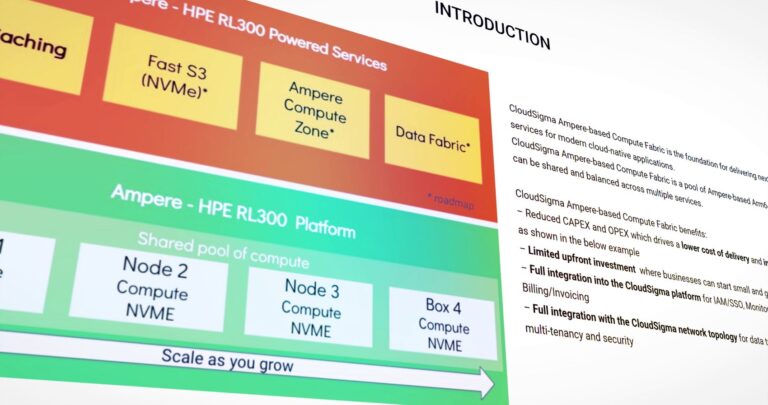Escalating calls for stainability are demanding immediate action.
Some research suggests that our heating world is likely to break a key temperature limit for the first time at some point in the near future.
It’s fair to say the IT sector does not have the greenest track record, with energy consumption during production and throughout the lifespan of equipment contributing to a sizeable carbon footprint. In light of this, we are now seeing landfills full of electronic devices – also referred to as ‘e-waste’ – that have been discarded but could have been refurbished to be made good as new.
E-waste is a global problem with just 17.4% of the planets’ tech waste currently being recycled. It’s also one of the fastest growing sources of waste, with about 50 million tons being created every year. This could be substantially reduced if a more sustainable approach to the lifecycle of IT were adopted. Committing, at a strategic level, to designing the technical infrastructure of a business with refurbished equipment in mind is one way to do this.
This year’s UK government Spring Statement, where it was announced that businesses will benefit from a full capital expensing policy for new IT equipment, feels like the bite might not be living up to the bark. Surely if the government is providing an incentive like this, it should be for encouraging a business to be more environmentally responsible?
With IT equipment making up 2.5% of carbon emissions globally, encouraging businesses to buy new hardware through a tax benefiting scheme might be a boost to digital transformation projects, but it goes entirely against ambitions to become a more circular economy. I for one would like to see the legislation tweaked to account for this.
If we are to achieve the sustainability targets set by the UK government to reduce carbon by 75%, substantially reducing technology waste must be a factor. That means we need to make the case for refurbished technology and give proper advice to businesses on how they can integrate a more sustainable choice into their network infrastructure.
Advantages of refurbished IT
When discussing the climate related advantages of refurbished IT, a question that is often asked is – ‘Does the environmental benefit of using refurbished equipment get cancelled out by higher energy consumption?’ While this concern may have held merit in the past, it is no longer the case today.
Since 13th generation servers were introduced to the market, energy efficiency has become consistent, with the same power supplies now used across multiple generations. The 15th generation equivalents do use slightly less energy, but not nearly enough for it to offset the carbon used to produce a brand-new piece of kit.
When it comes to performance, most businesses would never notice any difference between a 14th gen and 15th gen server. Therefore, if a business doesn’t use IT to run absolutely mission critical infrastructure, refurbished equipment is a more than adequate option.
Scalability is another advantage of refurbished IT. Even modular systems from previous generations seamlessly integrate with the latest servers, ensuring compatibility and flexibility as your business grows.
Of course, cost savings will always be an attractive factor when it comes to sourcing refurbished technology over new. Typically, if you are comparing a current model to a refurbished option on a like-for-like basis, you’ll usually save about 30-50%. Some of the largest savings can usually be found when buying either switches, hard drives, or a previous generation of server – in these cases, discounts of 70-75% are not unusual.
As we all know, the impact from the global supply chain and chip crisis is causing a lot of delays for manufacturers across the board, and there are no signs of this trend changing anytime soon. As a result, current lead times for new servers can be up to eight weeks, and for switches and storage arrays, this can be several months.
In contrast, refurbished IT doesn’t have the same delay, with shipping times usually measured in days rather than months. This makes refurbished the ideal option for when you need to extend your IT capabilities and don’t have luxury of waiting.
Urging the UK government to include refurbished IT in the new tax credit
The combined impact of improved sustainability, rising costs and increased time pressures means many businesses are feeling the pinch. Despite this though, the alure of a shiny new, never before used piece of equipment remains very strong. But there is another way.
The government’s plans to incentivise investment in new hardware, by allowing businesses to deduct these expenses from taxable profits, may hold the potential to provide an economic boost for the country, but there are clearly issues at play.
I’d urge the government to consider including refurbished IT equipment within this tax credit and make a commitment to promoting sustainable practices to help achieve the UK’s sustainability targets. This inclusion would add to the growing list of incentives for businesses to choose refurbished IT, reinforcing the country’s dedication to sustainability. Just like refurbished IT, this would surely be a win-win.
About the Author
Nick Stapleton is managing director at ETB Technologies. We specialise in the sale of New and Refurbished Servers, Storage and Network Equipment. We are one of Europe’s largest stock holders, and ship most items from stock on a next day delivery service. All servers can be fully configured to your specifications. We stock all leading brands including Dell, HP, Cisco, Juniper, Arista, Compellent and more. Shop spare parts or order multiple systems to fill your data centre.
Featured image: ©master1305


